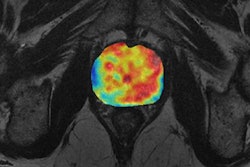Dear Artificial Intelligence Insider,
You may not have heard of generative adversarial networks, or GANs, but a respected group of researchers from Zurich has urged the medical imaging community to take more notice of this subclass of deep-learning algorithms comprising two neural networks that compete against each other.
In an important article published this month, the group explained why GANs require and deserve more attention. Don't miss our news report.
Meanwhile, investigators have developed an artificial intelligence (AI) algorithm that was able to screen for aortic dissection and rupture on CT angiography scans with high accuracy. This intriguing initiative has improved triage efficiency for the conditions prior to radiologist review.
Dutch researchers have been keeping extremely busy too. In the first of two original interviews, Kicky van Leeuwen and her colleagues from Groningen and Twente university hospitals have revealed the findings of their survey into attitudes to AI. Conducted between autumn 2018 and spring 2019, the analysis is worth a close look.
The second interview is about AI adoption and implementation hurdles. Lea Strohm and her coworkers from Utrecht spoke with a wide cross-section of medical imaging professionals during the first half of 2019.
Imaging biomarkers continue to show great promise, but they are often acquired with very different protocols. This makes the quantitation across sites and equipment variable, and it means radiologists and clinicians are wary about using them. To address the problem, the European Society of Radiology has released recommendations designed to promote the use of validated imaging biomarkers as decision-making tools.
This letter features only some of the numerous articles posted over the past few weeks in the Artificial Intelligence Community. Please scroll through the full list of our coverage below.



















